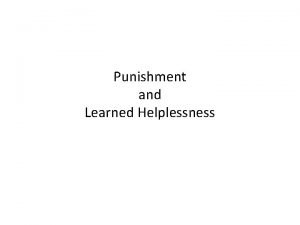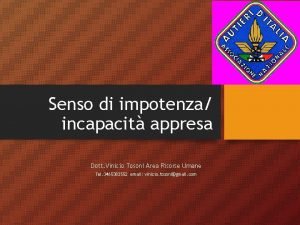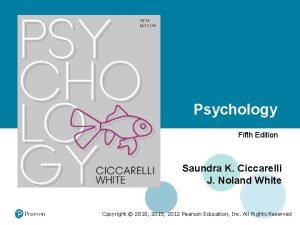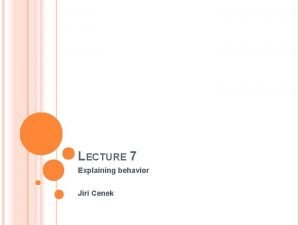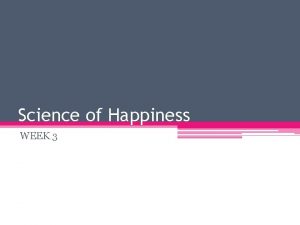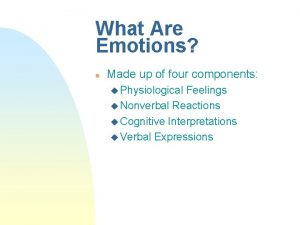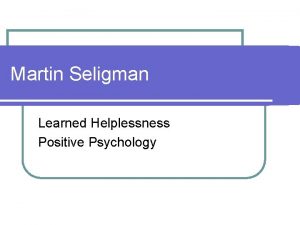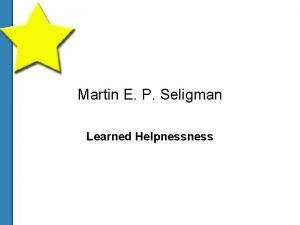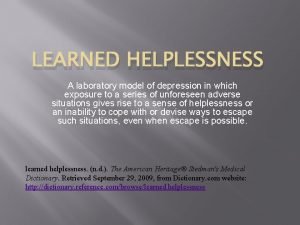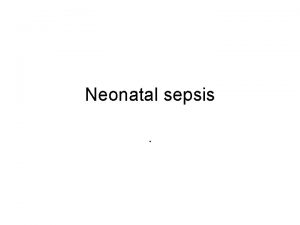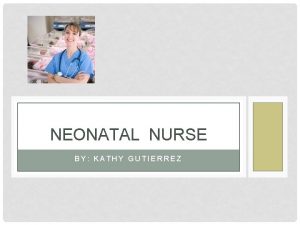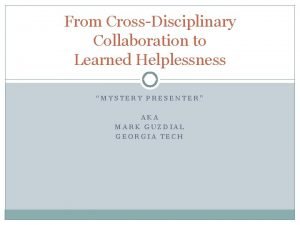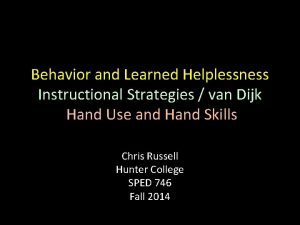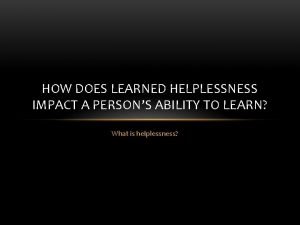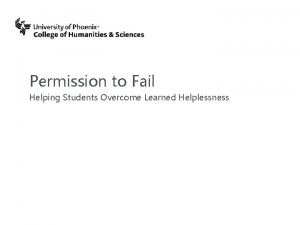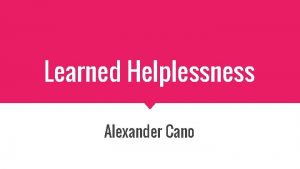Effect of Neonatal Handling on Learned Helplessness Model












- Slides: 12

Effect of Neonatal Handling on Learned Helplessness Model of Depression Costella, Tejedor-Real, Mico, & Rahola Presented by Jamie Renspe June 21, 2007

Prior Research Handled rats exhibited attenuated (i. e. less) fearfulness in new environments n More exploratory behaviors n Low emotional reactivity n Shorter escape latencies in a shuttle-box n n n Increases the reactivity to foot shocks Reduces cognitive, learning, and memory impairments in older rats

Model of Depression Learned Helplessness n A laboratory model of depression in which exposure to a series of unforeseen adverse situations gives rise to a sense of helplessness or an inability to cope with or devise ways to escape such situations, even when escape is possible. http: //www. answers. com/topic/learned-helplessness

Model of Depression Learned Helplessness Prior Research n Lack of control n Lack of prediction n

Question n Will rat handling during early postnatal periods make rats less susceptible to helplessness in adulthood?

Methods n Conditions n Control group n These rats were left undisturbed in their cages n 12 rats n Handled rats were removed from their cages and placed in a plastic container with a paper towel for 15 minutes every day n 8 rats

Methods continued… n Open field tests Circular open fields n Measured emotivity counting the number of boluses excreted n n Induction of Learned Helplessness n Electric foot shocks (US) paired with light (CS)

Methods continued… n Escape and Avoidance Performance n Automated two-way shuttle box n 2 chambers divided by a plastic partition or gate n n Led into other compartment Escape response n Would they attempt to escape? n Avoidance response n Escape failure n Failure for the rat to escape within 30 -60 seconds n Escape latency n The time from the start of shock to the escape response

Results Handled rats excreted less boluses compared to non-handled rats during the second session of the open field test n Handled rats had less of an escape deficit n Handling reduced the mean escape latency after induction of helplessness during the shuttle box sessions n Handled rats made more avoidance responses after inescapable shock session n

Results continued…

Results continued… Handling reduces the level of emotivity n Handling reduces the susceptibility of learned helplessness n n Endogenous opioids n Opioid-peptides that are produced naturally in the body n An opioid is a chemical substance that has a morphine- like action in the body

 Learned helplessness example
Learned helplessness example Learned helplessness theory psychology
Learned helplessness theory psychology Learned helplessness psicologia
Learned helplessness psicologia Learned helplessness
Learned helplessness Learned helplessness
Learned helplessness Learned helplessness
Learned helplessness Higher order conditioning psychology definition
Higher order conditioning psychology definition Learned helplessness ap psychology definition
Learned helplessness ap psychology definition Learned helplessness quiz
Learned helplessness quiz Debilitative emotions definition
Debilitative emotions definition Examples of facilitative emotions
Examples of facilitative emotions Keywords for cause and effect
Keywords for cause and effect Bohr effect and haldane effect
Bohr effect and haldane effect
